Being based in Colorado, my local car graveyards tend to get more old four-wheel-drive trucks than you’d see in flatter, less snowy regions. This includes plenty of International Harvester Scouts, of course, and lots of members of the Jeep family. Today’s Junkyard Gem is a rusty, battered early SJ Wagoneer, found in a self-service yard just south of Denver.
I’m calling this truck a 1966 model, because I’m guessing that’s the average vintage of its components. The build tag that once lived on the driver’s door jamb is long gone and there are no identifying numbers that I can find on the firewall. The yard employees have it listed as a 1982. I say we’ve got us a Ship of Theseus here. Feel free to include your best guesses in the comments!
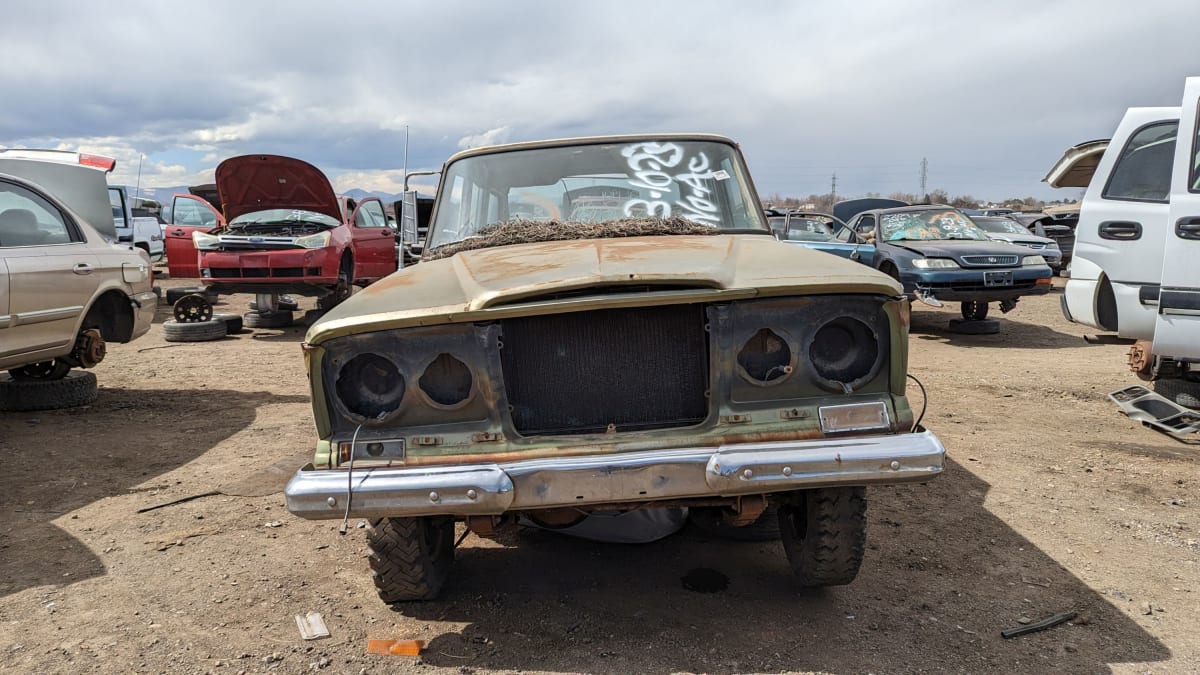
Actually, it really could be an ’82, because an SJ frame of that vintage isn’t significantly different from a ’62 SJ frame and many states go by the chassis when issuing titles. The front body components are much newer than the rear body components.

It’s got a dual-circuit brake system, which you’d expect to see on a 1965 or later SJ (which is impressive, because the federal government didn’t require such systems on light trucks until the 1967 model year). That doesn’t tell us much about the most likely model year for this truck, however, because truck owners who wish to remain alive in the event of a brake-system leak often retrofit their brakes (as I did with my 1966 Dodge A100).

The engine is an American Motors 327-cubic-inch (5.4-liter) V8, known as the Vigilante. This engine was available as an option in the SJ Wagoneer (or in the upscale Super Wagoneer as standard equipment) from the 1965 through 1969 model years, and it was rated at 250 horsepower and 340 pound-feet. Just to confuse everybody, Chevrolet had its own (much better-known) 327 V8 during the same era and Buick 350-cubic-inch V8s were available in the Wagoneer from the 1968 through 1971 model years. On top of all that, engine-swapping has been a cherished pastime for SJ owners since the very beginning.
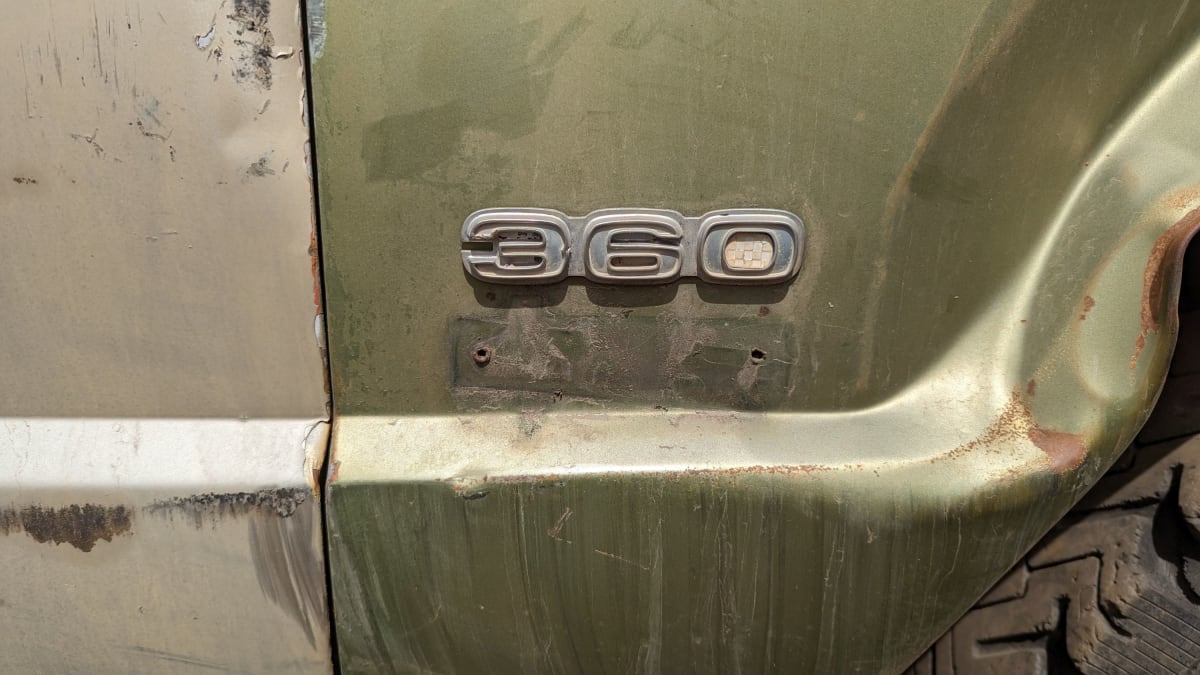
A green SJ Wagoneer or SJ Cherokee provided much of the sheetmetal in front of the A pillar. The American Motors 360-cubic-inch V8 first appeared in the SJ for the 1972 model year, and Chrysler continued building AMC 360s for the Grand Wagoneer even after buying AMC. For the sake of additional parts-counter mixups, Chrysler had its own 360 V8, completely unrelated to the AMC engine.
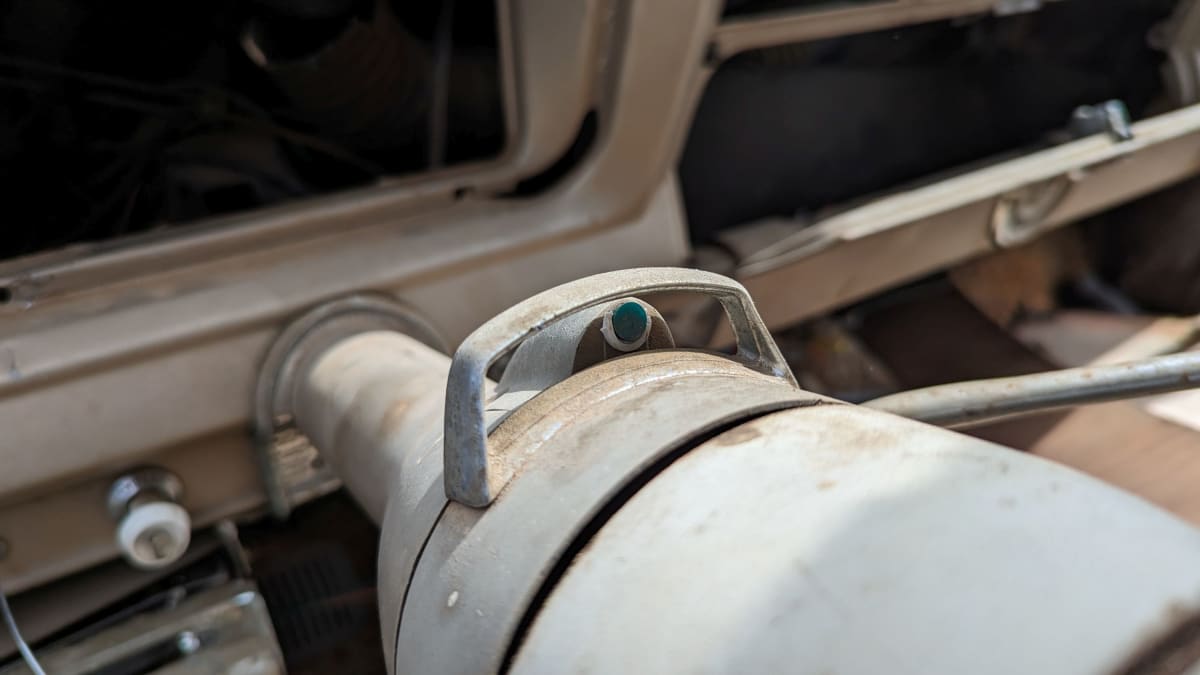
This truck has a GM-built automatic transmission, which would have been considered a frivolous luxury in the first Wagoneers but became more popular as the decades went on.
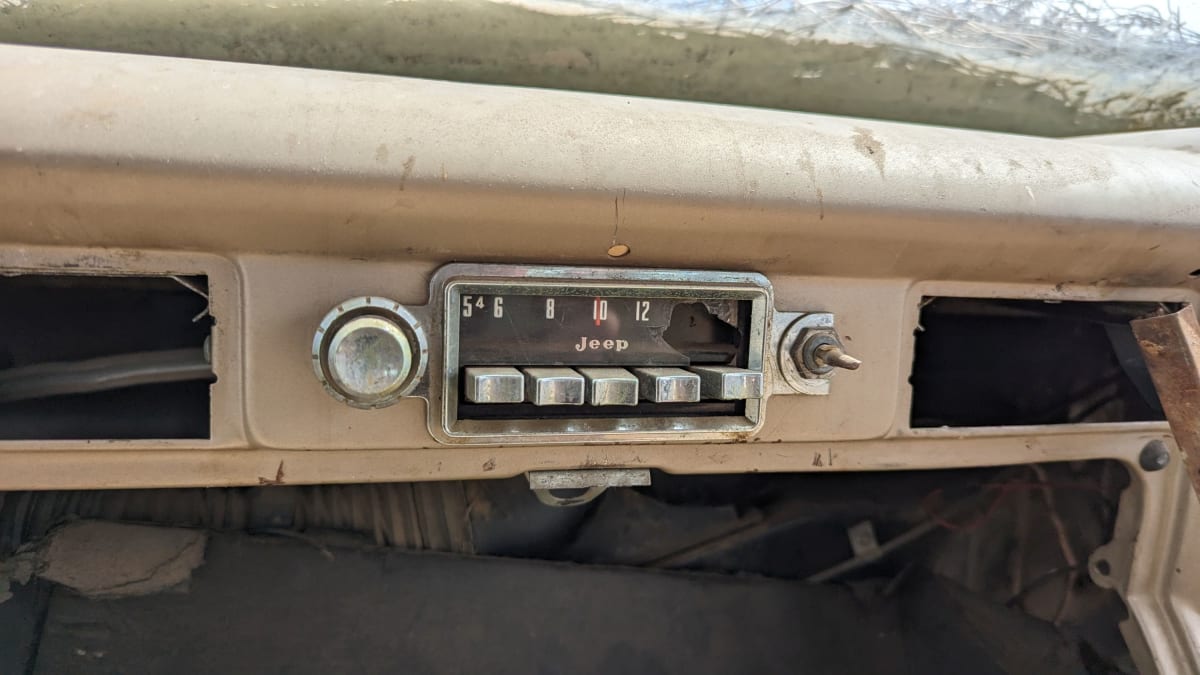
There are no CONELRAD nuclear-attack frequency markings on the factory AM radio, which means it was originally installed in a 1965 or later truck (maybe even this one).
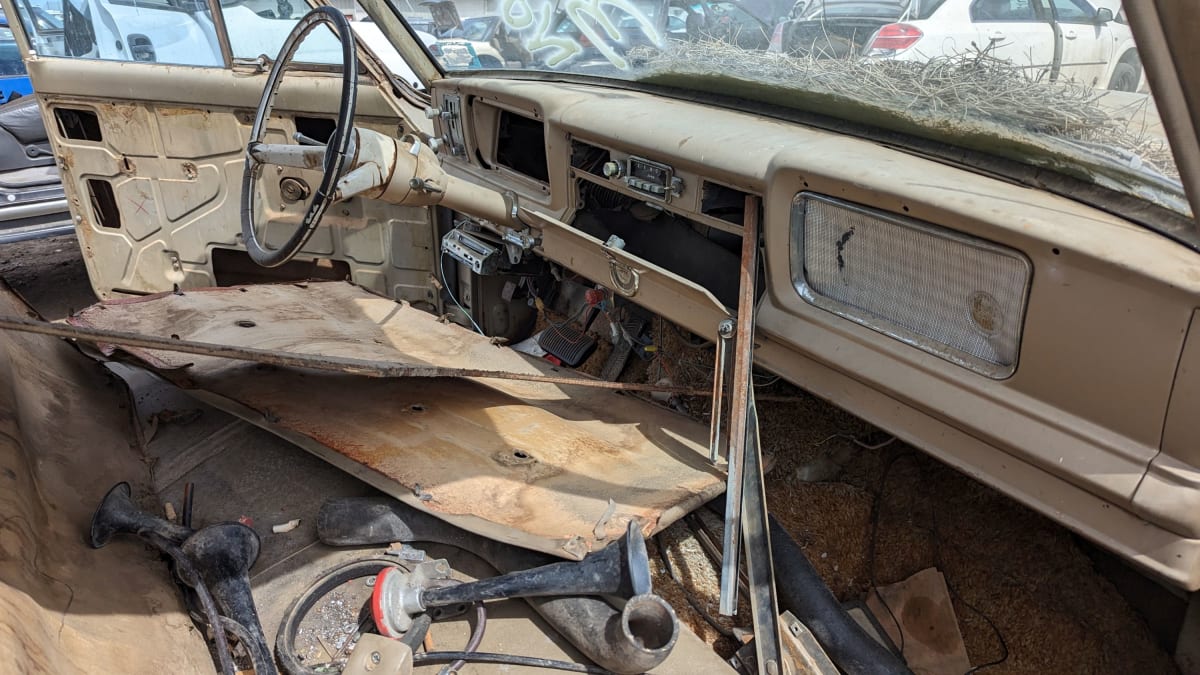
The interior is dusty and faded, with shag carpeting added at some point during its career. The holes above the glovebox and gauge-cluster locations suggest that this truck had dash padding, installed on 1965 and later SJs.

Here’s an accessory you saw in a lot of vehicles during the 1970s and 1980s: an Audiovox underdash FM/cassette radio.
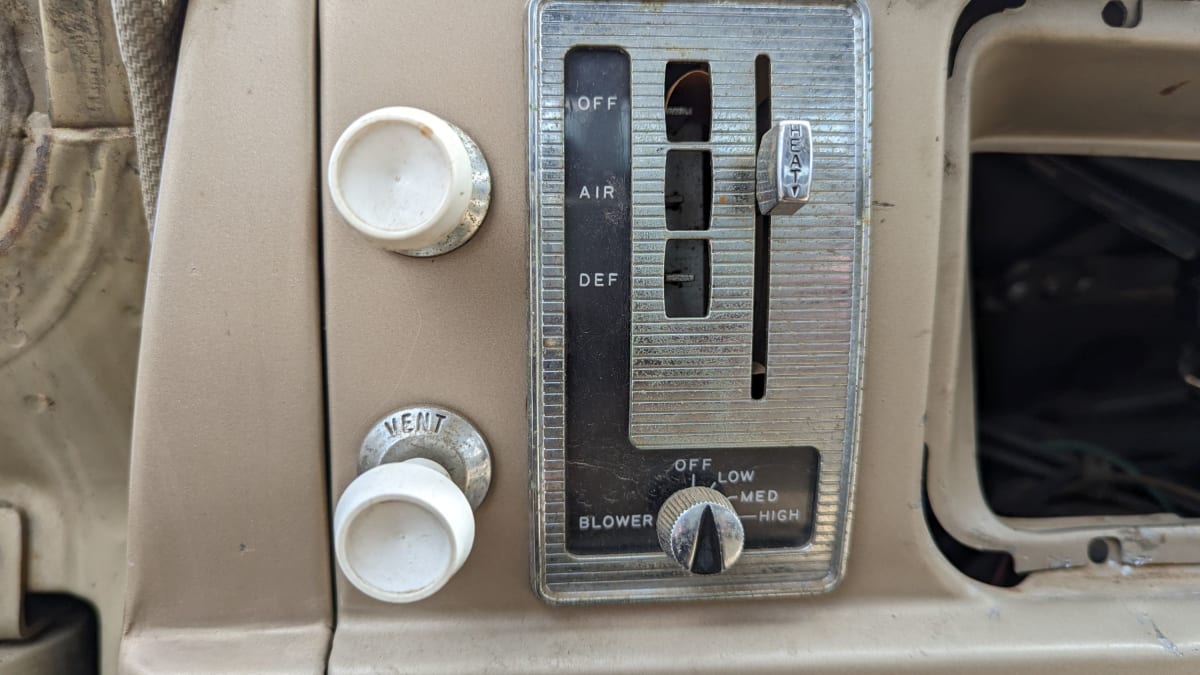
Heater/vent controls used to be very simple.
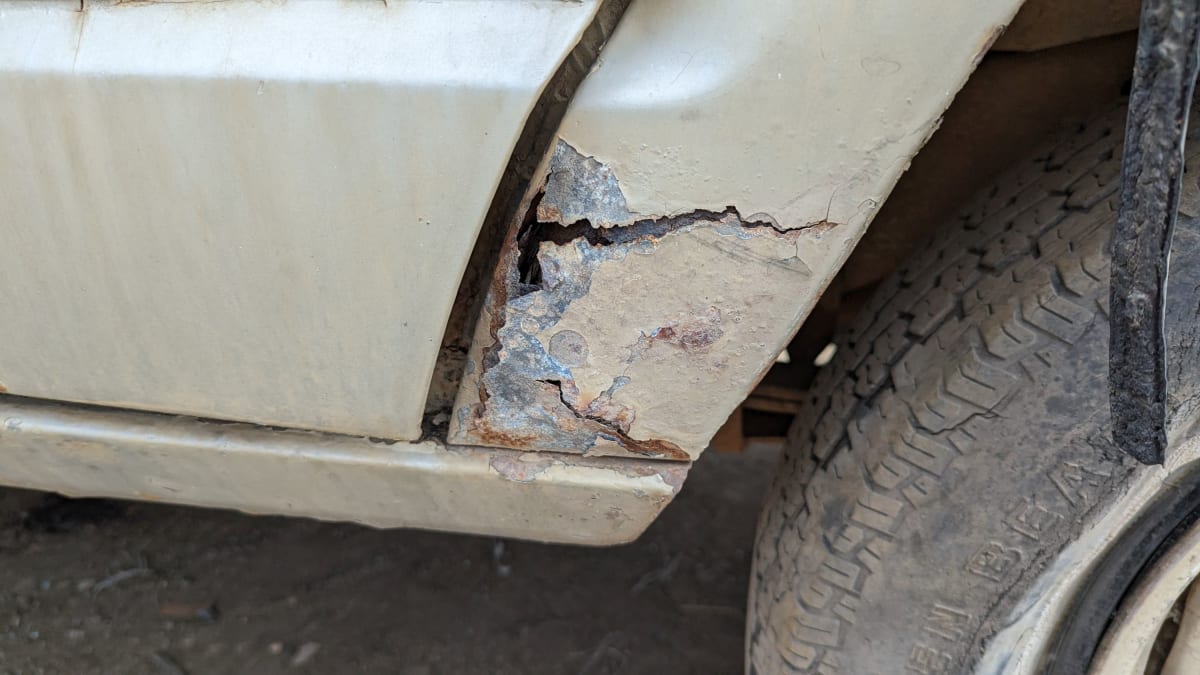
There’s rust in the usual areas. Very nice original SJ Wagoneers can fetch respectable money these days, but a FrankenWagoneer with rust isn’t worth the cost of a serious restoration.

How many camping trips did it have under its tires by the time it retired?
When your beach party is invaded by a Vigilante-powered Wagoneer, with only a machine-gun-wielding first-grader to defend you.
The SJ Wagoneer was a Kaiser-Jeep product until 1970, when American Motors took over. Then it became the Grand Wagoneer for 1984 (because the Wagoneer name was needed for an upscale XJ Cherokee trim level), and Chrysler built that from the time it bought AMC in 1987 until the final examples were built in 1991.
